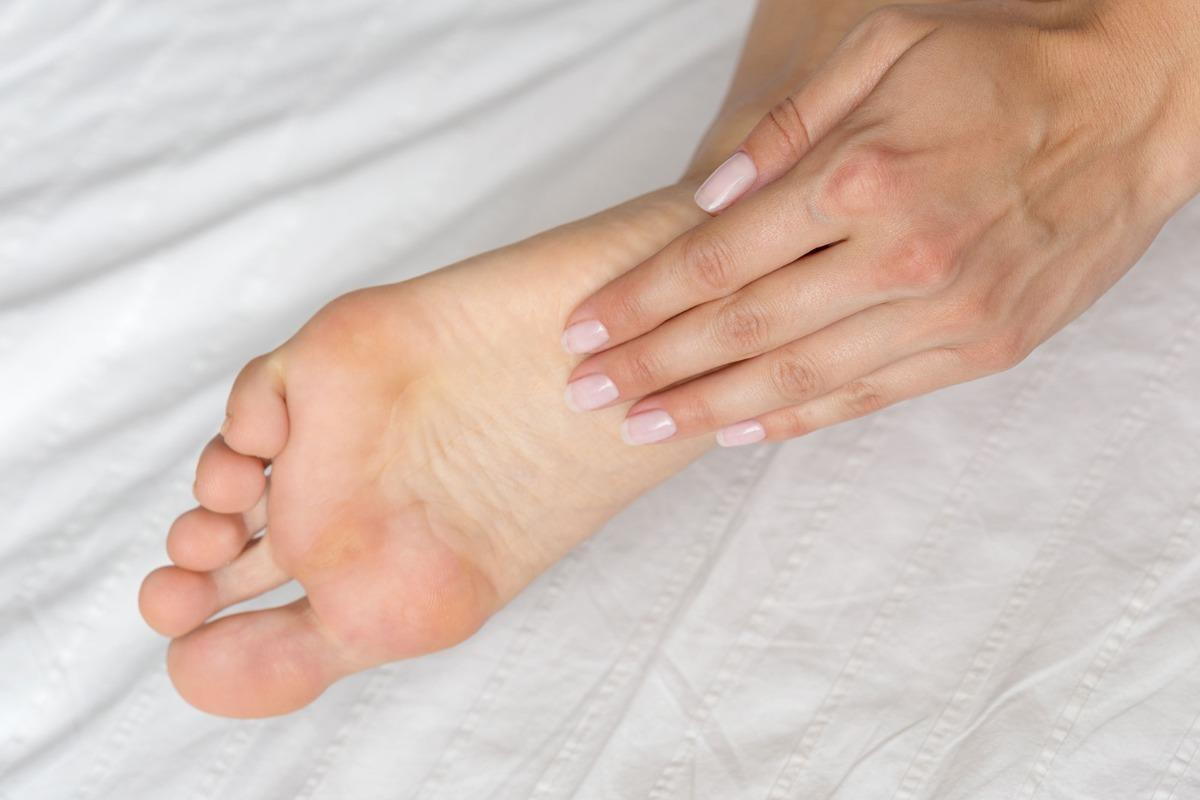How Does A Hypermobile Ankle Affect Your Feet?

- posted: Jan. 15, 2024
Ankle hypermobility—an often overlooked medical anomaly—can significantly impact a person's foot function and overall mobility. This articulation, functioning beyond the usual range, can lead to various issues that might be causing you discomfort or hindrance in performing everyday activities. However, understanding the condition's intricacies can be the first step in managing it effectively and mitigating its impact on your relatively active lifestyle.
Within this article, we explore the complexities of a hypermobile ankle, how it differentiates from a typical joint, and its specific effects on foot function. Furthermore, we will provide expert advice on managing hypermobility, including strategies to strengthen your feet and enhance mobility, with the input from the specialists at Centreville Foot & Ankle & Sports Medicine.
Definition of a Hypermobile Ankle
A hypermobile ankle, fundamentally, is a joint that exhibits a greater range of motion than what is considered typical. The ankle joint, composed of the talus, tibia, and fibula bones, is designed to support and stabilize the body while enabling an optimal range of forwarding, backward, and twisting movements. A normal ankle joint has a specific, limited range of movement that allows it to function efficiently while minimizing the risk of injury.
In contrast, a hypermobile ankle joint can move more freely and is characterized by excessive flexibility. This increased motion is primarily attributed to looser supporting ligaments, which results in decreased joint stability.
Understanding Hypermobility
Joint hypermobility can be observed throughout various body parts, with the ankle being just one example. Factors contributing to hypermobility may include genetic predispositions, collagen structure, and muscle tone. Additionally, certain connective tissue disorders and habitual influences can also affect joint laxity.
The repercussions of having a hypermobile ankle might manifest differently in each individual, with some experiencing little to no issues while others face constant discomfort. Hypermobility frequently affects daily life, potentially limiting certain activities, leading to discomfort during physical exertion, or increasing the likelihood of injury.
Impact on Foot Function
Hypermobile ankles can significantly influence foot function, leading to biomechanical imbalances and overcompensation mechanisms. This is due to the surrounding muscles and tendons working harder to maintain stability within the joint. As the muscles struggle to provide enough support for the excessively mobile ankle, increased pressure is placed on the foot, causing it to adapt and function inefficiently.
These adaptations can result in changes to the arch of the foot, improper weight distribution, and abnormal gait patterns. Ultimately, these alterations contribute to imbalances that might lead to musculoskeletal pain and a greater potential for injury.
Associated Risks
Several risks are inherently linked to hypermobile ankles, with one of the most common being an increased chance of sprains. The lack of joint stability exposes the ankle to twisting or rolling, making it more susceptible to injury. This can lead to more frequent or severe sprains, as well as longer recovery periods.
Additionally, with the surrounding muscles and tendons working overtime to compensate for the looseness, they are prone to strain and fatigue. This heightened stress may contribute to various issues such as Achilles tendonitis, shin splints, or plantar fasciitis. Long-term joint wear is another concern, as hypermobility tends to accelerate degenerative changes that might lead to conditions like osteoarthritis.
Management of Hypermobility
Fortunately, there are several ways to manage and mitigate the impact of ankle hypermobility. Proper footwear is of utmost importance; well-fitted, supportive shoes are essential in providing stability and helping to maintain the correct alignment of the foot and ankle. Custom orthotics might also help alleviate pressure and strain on the joint.
Physical therapy and targeted exercises to strengthen the surrounding muscles can also offer significant benefits. By enhancing these supportive structures, joint instability may be minimized, and potential injuries are potentially prevented. Furthermore, remaining observant of your body's signals is essential, as early intervention can help identify and address any developing issues.
Lastly, regular check-ups and ongoing monitoring are crucial for maintaining joint health and function. By working closely with medical professionals, such as the experts at Centreville Foot & Ankle & Sports Medicine, tailored treatment plans can be developed to account for your specific needs.
Brief Conclusion
A hypermobile ankle, though challenging, can be managed effectively through proper understanding and care. By knowing its impacts on foot function and potential risks, you can take appropriate steps to preserve your foot health and maintain a proactive approach to injury prevention. Don't hesitate to consult medical professionals, like the specialists at Centreville Foot & Ankle & Sports Medicine, to guide you in this process. Ultimately, with consistent vigilance and effort, you can look forward to continued mobility, improved comfort, and optimal well-being.

- posted: Jan. 15, 2024
Ankle hypermobility—an often overlooked medical anomaly—can significantly impact a person's foot function and overall mobility. This articulation, functioning beyond the usual range, can lead to various issues that might be causing you discomfort or hindrance in performing everyday activities. However, understanding the condition's intricacies can be the first step in managing it effectively and mitigating its impact on your relatively active lifestyle.
Within this article, we explore the complexities of a hypermobile ankle, how it differentiates from a typical joint, and its specific effects on foot function. Furthermore, we will provide expert advice on managing hypermobility, including strategies to strengthen your feet and enhance mobility, with the input from the specialists at Centreville Foot & Ankle & Sports Medicine.
Definition of a Hypermobile Ankle
A hypermobile ankle, fundamentally, is a joint that exhibits a greater range of motion than what is considered typical. The ankle joint, composed of the talus, tibia, and fibula bones, is designed to support and stabilize the body while enabling an optimal range of forwarding, backward, and twisting movements. A normal ankle joint has a specific, limited range of movement that allows it to function efficiently while minimizing the risk of injury.
In contrast, a hypermobile ankle joint can move more freely and is characterized by excessive flexibility. This increased motion is primarily attributed to looser supporting ligaments, which results in decreased joint stability.
Understanding Hypermobility
Joint hypermobility can be observed throughout various body parts, with the ankle being just one example. Factors contributing to hypermobility may include genetic predispositions, collagen structure, and muscle tone. Additionally, certain connective tissue disorders and habitual influences can also affect joint laxity.
The repercussions of having a hypermobile ankle might manifest differently in each individual, with some experiencing little to no issues while others face constant discomfort. Hypermobility frequently affects daily life, potentially limiting certain activities, leading to discomfort during physical exertion, or increasing the likelihood of injury.
Impact on Foot Function
Hypermobile ankles can significantly influence foot function, leading to biomechanical imbalances and overcompensation mechanisms. This is due to the surrounding muscles and tendons working harder to maintain stability within the joint. As the muscles struggle to provide enough support for the excessively mobile ankle, increased pressure is placed on the foot, causing it to adapt and function inefficiently.
These adaptations can result in changes to the arch of the foot, improper weight distribution, and abnormal gait patterns. Ultimately, these alterations contribute to imbalances that might lead to musculoskeletal pain and a greater potential for injury.
Associated Risks
Several risks are inherently linked to hypermobile ankles, with one of the most common being an increased chance of sprains. The lack of joint stability exposes the ankle to twisting or rolling, making it more susceptible to injury. This can lead to more frequent or severe sprains, as well as longer recovery periods.
Additionally, with the surrounding muscles and tendons working overtime to compensate for the looseness, they are prone to strain and fatigue. This heightened stress may contribute to various issues such as Achilles tendonitis, shin splints, or plantar fasciitis. Long-term joint wear is another concern, as hypermobility tends to accelerate degenerative changes that might lead to conditions like osteoarthritis.
Management of Hypermobility
Fortunately, there are several ways to manage and mitigate the impact of ankle hypermobility. Proper footwear is of utmost importance; well-fitted, supportive shoes are essential in providing stability and helping to maintain the correct alignment of the foot and ankle. Custom orthotics might also help alleviate pressure and strain on the joint.
Physical therapy and targeted exercises to strengthen the surrounding muscles can also offer significant benefits. By enhancing these supportive structures, joint instability may be minimized, and potential injuries are potentially prevented. Furthermore, remaining observant of your body's signals is essential, as early intervention can help identify and address any developing issues.
Lastly, regular check-ups and ongoing monitoring are crucial for maintaining joint health and function. By working closely with medical professionals, such as the experts at Centreville Foot & Ankle & Sports Medicine, tailored treatment plans can be developed to account for your specific needs.
Brief Conclusion
A hypermobile ankle, though challenging, can be managed effectively through proper understanding and care. By knowing its impacts on foot function and potential risks, you can take appropriate steps to preserve your foot health and maintain a proactive approach to injury prevention. Don't hesitate to consult medical professionals, like the specialists at Centreville Foot & Ankle & Sports Medicine, to guide you in this process. Ultimately, with consistent vigilance and effort, you can look forward to continued mobility, improved comfort, and optimal well-being.
Main Location
5729 Centre Square Dr,
Centreville, VA 20120
Monday
7:30 am - 4:00 pm
Tuesday
7:30 am - 4:00 pm
Wednesday
7:30 am - 4:00 pm
Thursday
7:30 am - 4:00 pm
Friday
7:30 am - 3:00 pm
Saturday
Closed
Sunday
Closed
